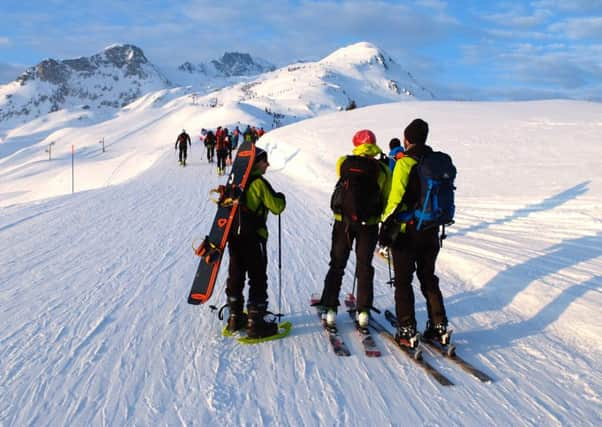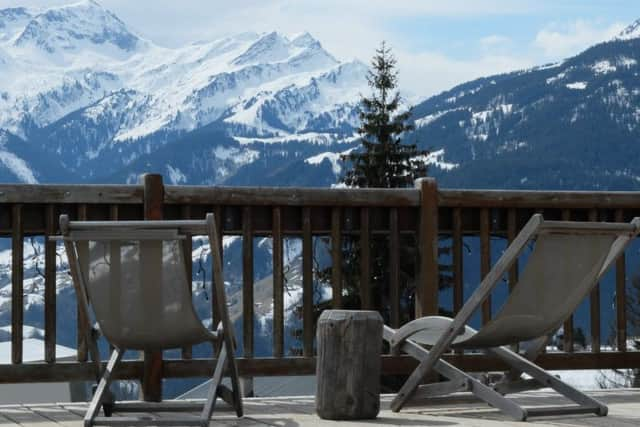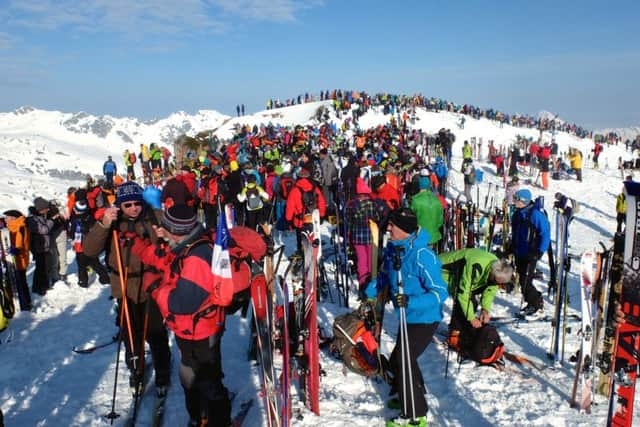Travel: On the slopes of Pierra Menta


It was 5am, dark and cold, and I was already standing in a long line to get on a ski lift in Arêches-Beaufort in the Savoie region of the French Alps. A few eager enthusiasts had been gathering since 4am and a local volunteer wandered the line of sleep-deprived people, offering hot coffee to appreciative faces. I was up at such an unearthly hour to witness some of the world’s most supremely fit athletes as they crossed a high altitude alpine pass in an attempt to win the Pierra Menta: one of the toughest mountaineering races in the world.
The Pierra Menta has been taking place in Arêches-Beaufort (France’s capital of ski alpinism) for 30 years. Over four days, 400 pairs compete in this challenging race, open to professionals and non-professionals alike, with a total of 10,000 metres of uphill vertical. The reward includes a cash prize and – in a region famed for its cheese – an enormous 50kg Beaufort .
Advertisement
Hide AdArêches-Beaufort is a magnet for ski touring. It’s a great place for beginners too. The resort has marked beginner routes that can be accessed free and offer climbs of 470 metres in altitude and 3.2km in length, making a perfect way to familiarise yourself before heading off to test your newly-acquired skills on the nearby peaks.


Ski touring equipment is lightweight and more flexible in comparison to downhill skis and boots. It’s an advantage if you are fit and can already ski, and have some off-piste experience, as you’ll have more fun negotiating your way through ungroomed snow. Aerobic and leg strengthening training is a good idea before you go to help you get through what can be a gruelling pastime.
Under cover of darkness, the chairlift carried us halfway up the mountain. Avid supporters swinging deafening cowbells (a tradition during ski races) adorned our backpacks with French flags in a bid to encourage their countrymen and women to win the enduring race. At the mid-station, we removed our skis and applied the skins we had carried up in our backpacks.
Skins make ski touring special, because they allow skiers to access terrain they cannot reach in normal skis. They are long ski-shaped strips, sticky on one side and with tiny fibres pointing backwards to stop the ski sliding backwards, yet still allowing you to slide forwards – a bit like the treads on a tyre. Ski touring boots can be released from the rear binding, so your heel is free to rise and fall and you are able to bend your knee to slide uphill. When you descend, you simply adjust the rear binding and click your heel securely into place, and off you go.
Hundreds of people of all ages started the climb to the top, moving at different speeds – getting up there is not a race, and people take their time and stop to enjoy the sun rising over the Alps or have a picnic breakfast. It’s advisable to dress in layers, and take plenty of water and a few snacks in case you need a boost of energy. I watched the sun rise as I slowly pushed myself up the mountain, stopping occasionally to take photos of the crowds and for water breaks – you certainly warm up as you climb.


Crowds gathered on the pass creating a wall of people either side of the ridge. A helicopter appeared overhead, a sure sign that the first skiers were about to appear. Giant cowbells were hurled about and shouts came from the crowd, encouraging every athlete. The first exhausted looking men and women arrived, travelling in teams of two. They had just climbed up a ridiculously steep mountainside and we watched as they speedily peeled off the skins from their skis, rolled them up and tucked them into their shirts before skiing into a steep-sided valley.
Advertisement
Hide AdI watched in awe as the racers created a zig-zag formation up the practically impenetrable mountain opposite – it was an impressive sight.
With the racers gone, the crowd began to disperse down the mountain. We clicked into our touring skis and skied downhill. After our early morning start, we spent the rest of the beautiful, sunny day taking in the sights of the resort. We mostly had the mountain to ourselves and the views were jaw dropping, with Mont Blanc standing out clearly in the distance. Lunch was a relaxed affair, sitting in the sun at l’Alpage restaurant.
Advertisement
Hide AdI stayed at Les Ancolies hotel in Arêches-Beaufort and, although basic, the rooms were warm, good value for money and just minutes from the main lift. The village itself is old, small and quaint, and has a few good bars and restaurants.


A day ski pass will cost €28.60 and there are 50km of fantastic slopes to enjoy.
The following day we relocated to Hateluce, an authentic tiny mountain village that overflows with charm, 25 minutes’ drive away, There’s a handful of shops and restaurants including L’Auberge du Mont Blanc on Rue de la Voûte, one of the best in town, with lots of tasty local dishes and a wonderfully friendly atmosphere.
We stayed at the beautiful three-star La Ferme du Chozal hotel, conveniently located next door to the chairlift. Skiing on downhill skis we took in the fabulous sights of the Espace Diamant ski area. Linking five resorts, it has a total of 185km of slopes, and a day pass costs €38.10. Every Tuesday evening during the winter season you can join the Arêches Dynafit Expériences, a fun night-time ski touring excursion with equipment included and booked through the Arêches-Beaufort tourist office.
And finally, the prize, with dinner back at La Ferme du Chozal and a delightful taster menu, followed by local cheese. Because you don’t have to win the Pierra Menta to enjoy a bit of Beaufort.